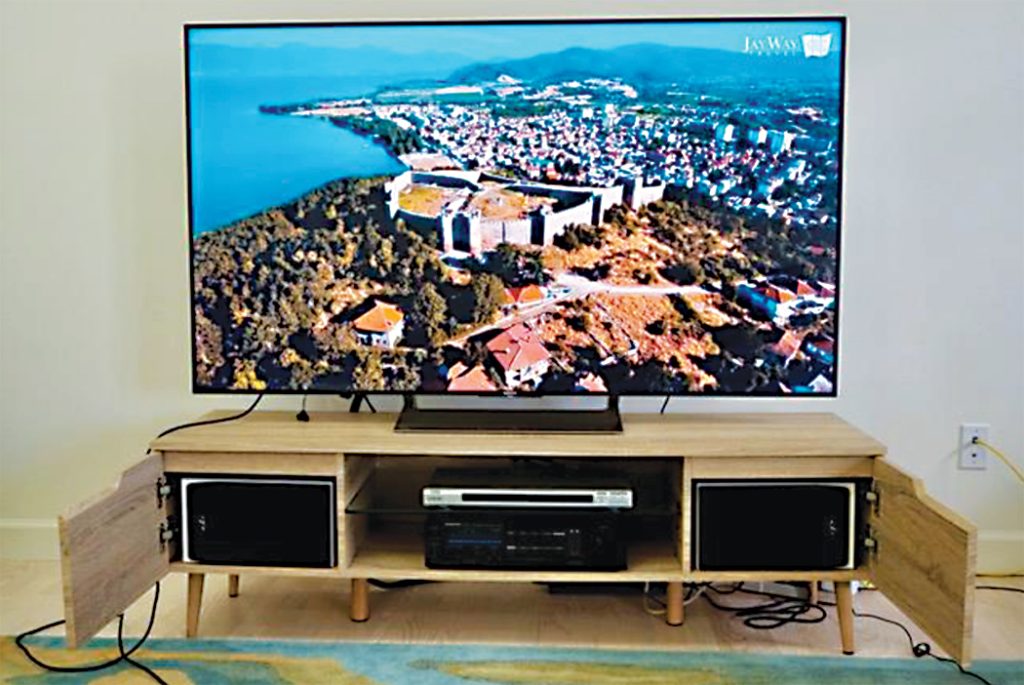
If I had my way, everybody would immediately hook their new HDTV and video sources to a premium AV receiver and enjoy the full excitement of movies and the realism of music with a ton of detail and impact. Often, however, our budget requires moving forward in steps.
For many, the TV is the first step in an AV system upgrade. Every day, as countless people turn on their new televisions, the improved picture may be miles beyond their old TV, but the sound is usually worse than before. Why is this?
Instead of researching which companies make the best TVs, most people simply compare price per size—a genuinely bad way to pick a television. Sound comes into the equation only after the buyer installs the new HDTV and notices how bad it is. With today’s TVs, it’s harder than ever to get good sound out of the set itself. The super flat TVs of today don’t have any room to spare for a quality speaker that gets good low notes.
There are a few exceptional TVs in which the screen is made to physically vibrate, effectively turning it into the speakers. The 65-inch Sony TV is a good example of this. The resulting sound is better than that of the tiny speakers usually put into a flat TV.
If you bought a TV in the last few years, it’s more than likely that the salesperson talked you into a soundbar, with the promise of better audio. It’s even more likely that the soundbar still sounds pretty bad, with inadequate bass, hard-to-understand dialogue, and unnatural distortion. Don’t get me wrong; soundbars are useful if there’s no space for conventional speakers, and they can be made to sound musical, but the good ones will exceed $1,000, more than a decent receiver and speakers would run.
I just set up a system for a couple who wanted to move their sound past what their soundbar was giving them. We used a refurbished 20-year-old Kenwood stereo amp and put most of their budget into a pair of the amazing Paradigm Atom speakers, small enough to fit perfectly into their TV cabinet stand, but big and sophisticated enough to have clear vocals and full, clean bass.
To test it out, we opened their TV’s YouTube app. With no digital inputs on the amp, we actually got the sound from the TV out of the TV’s headphone jack, run into one of the stereo inputs on the old amp. They used their TV remote control to adjust the volume. The sound far surpassed the soundbar.
The couple was delighted by the huge improvement, but I was not. The headphone amp on this particular TV isn’t terribly sophisticated, so although it was much “better than before,” the videos didn’t sound as good as I knew they should.
To finish the job in the best way, I’m recommending that they take one more step. The optical digital output on the TV supplies its best possible sound, even though their soundbar was too poor to take advantage of this fact. I’m suggesting that they add a little DAC (digital to analog converter) to allow their vintage amp to receive the audio with its full measure of musicality. These days, the little gadgets that can do this cost less than $200 for the good ones. Even the under $50 models sound quite good, but they don’t have the lasting power or the decoding prowess of the better models.
The message I bring is that a big sound improvement can be made to your current audio-video system without spending much at all, and without ever resorting to poorly built promotional junk. Please make it a habit to expect great audio on your video, and to listen before you buy. Settling for “better than before” is not enough.
Paul owns Golden Ears Inc. in Fairfield, Iowa, and has been a high-end AV consultant for 50 years.
